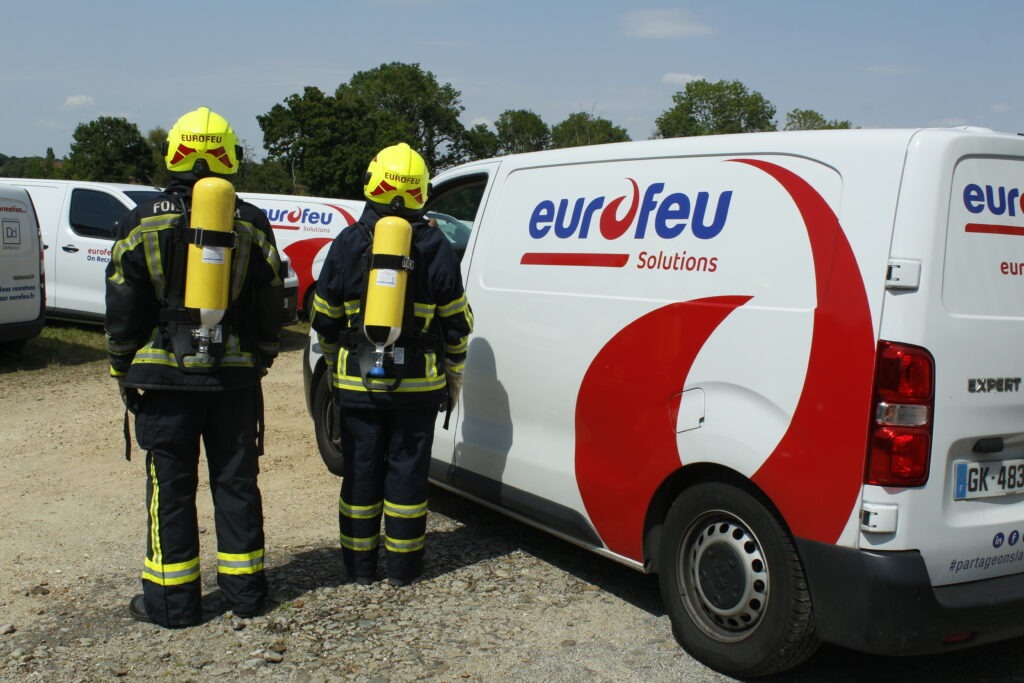What is fire training?

Fire training is mandatory for all companies in France. Its aim is to make employees aware of the risks associated with fire, and to teach them good safety practices. The content of this training includes the use of fire extinguishers, evacuation procedures and fire prevention. This is an essential step in making the workplace safer and minimizing the risk of fire.
Importance of fire training
Fire training plays an essential role in protecting life and property. Not only is it mandatory under French law, it is also an investment in safety. By training employees, companies can limit the loss of life and property in the event of fire.
The benefits are many:
- Reduce the risk of fire by better understanding the causes and implementing preventive measures.
- Safe evacuation preparation, minimizing the risk of panic.
- Awareness of life-saving techniques, such as the use of fire extinguishers and the rapid identification of hazards.
In an industrial environment, for example, training enables first-response team members to react quickly, thereby limiting damage. All in all, a well-executed fire training course ensures better responsiveness to emergencies.
Fire-related risks
Fire risk prevention and management
To prevent fires effectively, a number of key measures need to be put in place. These include the regular organization of evacuation drills to familiarize staff with safety instructions. Training employees in the use of fire extinguishers and the operation of fire alarms is also essential.
It's important to designate people in charge, such as guide-files and guide-grips, to supervise evacuations. Companies must also provide safe waiting areas for people with reduced mobility.
Proactive risk management involves raising awareness of risky behaviors, such as the inappropriate use of electrical appliances. By integrating these practices, facilities strengthen their ability to protect their employees and infrastructure from fire. Facility managers therefore have a central role to play in developing and implementing these prevention strategies.
The company's role in fire risk prevention
Companies play a vital role in fire prevention by ensuring that all infrastructures comply with safety standards. They must implement measures such as fire detection systems and well-defined evacuation plans.
To guarantee safety, it is essential to carry out regular periodic testing of extinguishing equipment. This ensures that they are working properly in the event of an emergency.
It's vital that staff are trained in fire-fighting techniques, including practical exercises adapted to their working environment.
Companies can also call on specialist organizations to provide such training. Thanks to this proactive approach, they can enhance the safety of their employees and protect their assets from fire-related risks.
The impact of a fire in a professional environment
In a business environment, a fire can have devastating consequences. Material damage is often considerable, leading to high repair costs and loss of equipment. It can also bring business to a standstill, resulting in loss of revenue and interruption of services.
Human consequences include the risk of smoke poisoning, endangering the health of employees. Environmental impacts are not to be overlooked, with air and water pollution caused by the chemicals used to extinguish the fire.
To minimize these risks, effective preventive measures are crucial. Companies can, for example, equip themselves with advanced detection systems and organize regular evacuation drills. By adopting these strategies, they strengthen their resilience to fire and better protect their assets.
Corporate fire training
Why is it mandatory?
Fire training is essential for a number of reasons. It ensures the safety of employees and the protection of property. In the event of a fire, a rapid and effective response is crucial. Thanks to this training, employees learn to use fire-fighting equipment correctly.
It is also mandatory to comply with legal requirements in France, particularly for companies with over 50 employees or those handling flammable products. Benefits include reduced accident risks and material losses.
Here are a few key points:
- Preparing employees to deal with an outbreak of fire
- Effective evacuation procedures
- Use of fire extinguishers and other safety equipment
This training contributes to a culture of risk prevention within the company, guaranteeing better protection for all.
The need for a fire extinguisher in the workplace
Fire extinguishers are an essential element of corporate safety. Every establishment must have enough fire extinguishers to cover its premises effectively. French regulations require at least one extinguisher per floor, with a minimum capacity of 6 liters for every 200 square meters of floor space.
It's crucial that staff are trained in their use. Correct handling prevents the spread of fire and ensures rapid intervention. Training generally includes recognition of the different types of extinguisher and their use according to fire class.
Companies must ensure that this equipment is easily accessible and regularly maintained. To this end, annual checks are mandatory.
Here's a concrete example: in a three-storey, 300 square metre SME, at least nine fire extinguishers must be installed, and staff must be trained in their use. These precautions guarantee an effective response in the event of fire.
What's the procedure for in-house fire training?
An in-house fire training course is generally divided into two parts: a theoretical phase followed by practical exercises. The theoretical part covers essential concepts such as the principles of combustion and the different ways in which fire spreads. Participants also learn to identify the different types of extinguishers and how to handle them safely.
During practical exercises, employees are put into real-life situations to maximize learning. They practice extinguishing a simulated fire and performing evacuation maneuvers. These simulations are crucial to ensuring that everyone knows how to react quickly in the event of a fire.
Training often includes the appointment of guides and gatekeepers to ensure an orderly evacuation. These roles are essential to direct occupants to a safe assembly point. By incorporating these elements, training reinforces the company's ability to effectively manage emergency situations.
Fire training regulations
French regulations require employers to ensure that employees are trained in fire safety, in accordance with article R4227-28 of the Labor Code. This requirement particularly applies to companies with 50 or more employees, as well as those handling flammable substances. Employees must be able to react quickly in the event of a fire.
Obligations include :
- Clear safety instructions.
- Regular evacuation drills.
- Practical training in the use of fire extinguishers.
Training must be renewed periodically to ensure that all workers are up to date. In addition, companies can call on specialist organizations to provide this training, ensuring that expertise is adapted to the new standards in force. These measures enhance employee protection and minimize the risk of incidents.
Fire training: everything you need to know
Fire evacuation: a key training point
In the event of a fire, rapid and efficient evacuation is essential to ensure the safety of everyone present. Evacuation training includes several key steps to ensure an orderly and safe exit from the building.
To optimize this management, it is necessary to appoint guides and gatekeepers to direct occupants to the emergency exits. These people must be trained to maintain calm and provide clear instructions.
Everyone must be familiar with evacuation instructions, including the routes to be followed and the assembly points to be reached after evacuation.
Regular drills enable employees to become accustomed to evacuation procedures and to react effectively in the event of an emergency. A concrete example might be the organization of an evacuation drill every six months, to simulate a fire scenario and assess employees' ability to react.
Dealing with a fire: the right thing to do
To respond effectively to a fire outbreak, certain actions are essential. First of all, it's crucial to stay calm and assess the situation clearly. If the fire is small and you can extinguish it safely, use a fire extinguisher or fire blanket. Make sure you know where extinguishing equipment is located in your environment.
If the fire is too large or the smoke becomes dense, it's imperative to activate the fire alarm to alert the other occupants. Then evacuate immediately, following the safety instructions:
- Close doors behind you to slow the spread of fire.
- Use the emergency exits identified during fire training.
- Meet at the designated assembly point.
In case of smoke, duck close to the ground where the air is more breathable. Avoid returning indoors to retrieve objects.
Training for guides and clerks
Leaders and closers play an essential role in the evacuation of a building in the event of fire. Both positions require specific training to ensure the safety of all occupants. The guide is responsible for directing people to the nearest exits, while maintaining calm. As for the line-keeper, he or she ensures that no one is left behind, and checks that all areas have been evacuated.
The main responsibilities of these roles are as follows:
- Direct occupants to emergency exits
- Make sure no one goes backwards
- Check for complete evacuation
- Report any anomalies to the emergency services
A concrete example of application would be the regular organization of evacuation drills to ensure that all employees are fully aware of their role and the procedures to be followed in an emergency situation.


